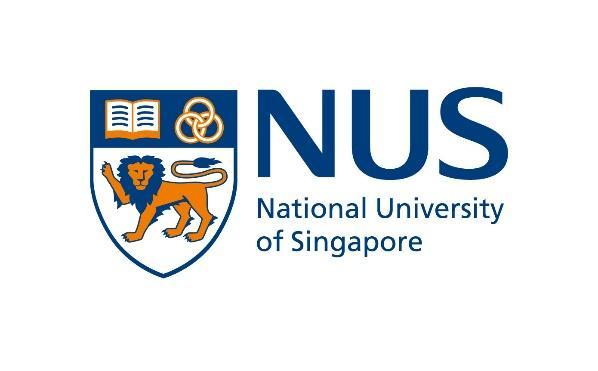
CONSERVING THE RECENT PAST OF EVERYDAY MODERNISM
ChallengesinConservingPost-IndependenceArchitecture inSingapore.
by
MercyStanleyFelciaMabel
ADissertation
SubmittedtoDrJohannesWidodo
NationalUniversityofSingapore
InPartialFulfillmentoftheRequirements fortheDegreeMastersofArtsinArchitecturalConservation [April2025]
ACKNOWLEDGEMENTS
Thisthesiswouldnothavebeenpossiblewithoutthesupportandguidanceofseveral keyindividuals,towhomIamdeeplyindebted.Itisimpossibletocompletesucha projectalone,andI'mincrediblygratefultothemanypeoplewhohelpedmealongthe way.Thisacknowledgementismywayofexpressingmysincerethankstothem.
Mysinceregratitudegoesfirstandforemosttomysupervisor,ProfessorJohannes Widodo.Hisinsightfuladviceandpatientguidancewereinstrumentalinnavigatingthe challengesofthisresearch.IamalsogratefultoProfessorsHoPuay-Peng,andNikhil Joshifortheirvaluablecontributionstomyacademicdevelopmentandforprovidinga stimulatinglearningenvironment.Theirexpertiseandinsightswereinvaluablein shapingmyunderstandingofarchitecturalhistoryandtheory.Iamgratefulfortheir dedicationtoteachingandtheircommitment.Theyhelpedmetodevelopthecritical thinkingskillsthatareessentialforacademicsuccess.
Iwouldalsoliketoacknowledgemyfriendsandclassmates.Theircompanionshipand supportwereespeciallymeaningfulasIadjustedtolifeinanewcountry.Their presencemademyexperienceinaforeigncountrymoreenjoyableandlessisolating.I amgratefulfortheirfriendshipandforthememorieswecreatedtogether.
Finally,Iwishtoexpressmyprofoundappreciationtomyparentsandsister.Their unwaveringlove,encouragement,andbeliefinmehavebeenmyconstantsourceof strengthandinspiration,evenwhentheyseemedimpossible.
LIST OF ABBREVIATIONS
HDB–HousingandDevelopmentBoard
URA–UrbanRedevelopmentAuthority
SERS–SelectiveEnBlocRedevelopmentScheme
SIT–SingaporeImprovementTrust
HIA–HeritageImpactAssessment
DOCOMOMO–DocumentationandConservationoftheModernMovement
CLC–CentreforLiveableCities
NLB–NationalLibraryBoard
GLOSSARY
Adaptive Reuse –Theprocessofrepurposingbuildingsforviablenewusesand modernfunctions,whileretainingtheirheritagevalues.
Everyday Modernism –Aformofarchitecturalmodernismappliedtoutilitarianand commonlyusedstructuressuchaspublichousing,schools,andcommunitycentres, reflectingeverydaylifeinthepost-independenceperiod.
Heroic Modernism –Monumentalandiconicmodernistbuildingsdesignedto symbolizenationalidentity,technologicalprogress,andstateambition.
Heritage Impact Assessment (HIA) –Asystematicprocessusedtoevaluatethe potentialeffectsofadevelopmentprojectonculturalheritagesitesandtorecommend mitigationmeasures.
Selective En Bloc Redevelopment Scheme (SERS) –Agovernmentprogramin SingaporeaimedatredevelopingolderHDBestatestooptimizelanduseandprovide upgradedhousing.
Strategic Conservation Areas –Proposedzoneswithinacitythatprioritizethe conservationofbuildingsordistrictswithsignificantarchitecturalorculturalvalue.
Urban Redevelopment Authority (URA) –Singapore’snationalurbanplanning authority,responsibleforlanduseplanningandconservation.
USE OF AI TOOL
Grammarly–Sentenceframing
reflectsabroadertransitiontowardsmodernistprinciples,which,thoughemergingin thepost-warcolonialera,werefullyembracedasasymbolicbreakwiththepastduring thenation-buildingeffortsofindependentSingapore.Thisapproachwasessentialin addressingthepressingissuessuchashousingshortages,urbanrenewaletc.
Singapore’smodernistarchitecturecanbecategorizedintotwotypes: Heroic modernismandeverydaymodernism.
1.1.1 HEROIC MODERNISM:
Thiskindofmodernismstructureincludesverybiggrandeurlandmarkbuildingsthat symbolizenationalprogressandinnovation.Thesestructuresorbuildingswereoften state-ledprojectsthatweredesignedtoshowcaseSingapore’sindustrialandeconomic ambitions.Heroicmoderniststructureoftenemployedinboldformsandinnovative materials,reflectingtheoptimismofthatparticularera.ExamplesofHeroicModernism inSingaporeincludetheformerNationalTheatre(demolished),withitsdistinctive cantileveredroofthatsymbolizedSingapore'sambition,theSingaporeConferenceHall (nowSingaporeChineseOrchestra),whichshowcasedamodernandfunctionaldesign forinternationalgatheringsandtheJurongTownHall,reflectingtheindustrial ambitionsofthetime.Thesebuildings,withtheirimposingpresenceandinnovativeuse ofmaterials,weredesignedtoprojectanimageofprogressandmodernitytotheworld.
This"HeroicModernism"wasnotuniquetoSingapore.AcrossEastAsia,newly independentnationsemployedsimilarstrategiestoshowcasetheirprogressandbreak withcolonialpasts.Theemphasisongrandscale,boldforms,andmodernmaterialswas acommonthreadintheseprojects,reflectingashareddesiretoprojectanimageof modernityandprogressontheglobalstage.Theseapproachestoarchitectural
EverydayLife,"remindusthattheseroutineexperiencesareessentialfor understandingourselvesandtheworldaroundus.Lefebvre'sworksuggeststhatthe "everyday"isnotmerelyabackdroptomoresignificanteventsbutaspacewheresocial structuresarereproduced,challenged,andtransformed.Applyingthisperspectiveto Singapore'severydaymodernistarchitectureallowsustoseeordinarybuildingsas crucialsitesforunderstandingthesocial,cultural,andpoliticaldynamicsofthenation. Healsosaysthatspaceisn'tjustanemptycontainerwaitingtobefilled.Instead,itis createdbyhowpeopleuseitandinteractwithinit.InSingapore,thismeansthatplaces likeHDBflatsandcommunitycentresarenotwillnotjustbuildings,theyarespaces thatshapehowpeopleliveandinteract,andinturn,areshapedbythepeoplewhouse them.Hetalksabout"livedspace"whichishowpeopleactuallyexperienceanduse spacesintheirdailylives.Thisoftendiffersfromhowarchitectsorurbanplanners intendedthespacestobeused.InSingapore,wecanseethisinthewaypeople personalizetheirHDBflatsorhowcommunitycentreschangeovertimetomeetnew needsofresidents.Lefebvre'sideashelpusunderstandthattheseeminglyordinary buildingsofSingapore'severydaymodernismarefarmoresignificantthantheymight appearatfirstglance.ThereareexamplesofHDBflats,schools,communitycentres,and hawkercentresareseenalloverwhicharenotjustfunctionalspacesbutintegral elementsofSingapore'ssocialandculturalfabric,reflectingthenation'spoliciesand identity.Publichousingestates,suchasHDBflats,serveasmicrocosmsofSingaporean society,showcasingthegovernment'sstrategiesforhousing,communitybuilding,and socialintegration.Theirdesignemphasizescommunalspacesandfairhousing allocation,shapingthedailylivesandinteractionsofresidentswhileofferinginsights intothestate'ssocialengineeringefforts.Similarly,schoolsandcommunitycentresplay apivotalroleinsocialization,impartingsocietalvaluesandnormsthroughtheir
architecture,whichprioritizesfunctionalityandefficiency.Theseinstitutions underscoretheimportanceofeducationandcommunityengagementinSingapore's nation-buildingnarrative.Hawkercentres,ontheotherhand,representauniqueaspect ofSingapore'sculinaryheritageandsocialcohesion.Theybringtogetherpeoplefrom diversebackgroundstosharemealsandfosterasenseofsharedidentityrootedin multiculturalism.Together,theseeverydaymoderniststructureschallengethe traditionalfocusongrandmonumentsandiconicdesignsbyhighlightinghowordinary buildingsshapesocialinteractions,culturalidentities,andthelivedexperiencesof Singaporeans.Theyencourageustolookbeyondsurfaceappearancestounderstand howthesespacescontributemeaningfullytothenation'sbuiltenvironmentandits relationshiptosociety.
1.2 CHALLENGES IN CONSERVATION
1.2.1 Material & Structural Challenges:
Manymodernistbuildingsrelyheavilyonreinforcedconcrete,whichisproneto spalling,corrosionofsteelreinforcements,andcrackingduetoSingapore’shumidand tropicalclimate.Conservationeffortsrequirespecializedrestorationtechniques,but repairsoftencompromisetheoriginalaestheticandstructuralintegrity.Manybuildings featurematerialslikeprecastconcretepanels,earlyglasscurtainwalls,terrazzo,and mosaictiles,whicharenolongerinproduction.Andalsothechallengesinsourcing originalmaterialsandadaptingmoderniststructurestocontemporarysafetyand sustainabilitystandards.Findingmatchingmaterialsormodernsubstitutesthatcomply withconservationstandardsischallenging.Retrofittingthesebuildingswhile maintainingtheiroriginaldesignintentisdifficult.
1.2.2 Public Perception & Socio-Cultural Value:
Unlikecolonialheritagebuildings,Everydaymoderniststructuresoftenlackaesthetic appealtothegeneralpublic,asentimentbyJameson(1991)inhiscritiqueof postmodernism'srejectionofmodernistideals. Theperceptionthatthesebuildingsare “ugly,”outdated,or“notoldenough”tobehistoriccontributestolowsupportfortheir conservation(Lowenthal,1985).Andalsothetensionbetweennostalgiaand practicalityinurbandevelopment.Somemodernistbuildingsarelinkedtoaging infrastructure,poormaintenance,orsocialissues(e.g.,high-densitypublichousingand oldcommercialcomplexes).Thisdiscouragesinvestmentintheirconservation.
1.2.3 Economic Constraints:
Costofadaptivereuseagainstdemolitionandredevelopment isabigeconomic challengein Singapore. As 2Rodwell(2007)argues,restoringmodernistbuildingsoften requirescostlyrepairsandspecializedtechniques,makingconservationfinancially unappealingcomparedtodemolitionandredevelopment.Developersandproperty ownersmayseemodernistconservationasafinancialburdenratherthanan opportunity.Andalsotheincentivesandfundingmechanismsforpreservingmodernist structures,Unlikepre-warbuildings,post-independencestructuresoftenlacktax incentives,grants,orconservationsubsidies.Thegovernment’sfocusoneconomic growthandurbanrenewalmeansconservationoftentakesabackseat.
1.2.4 Climate Change and Sustainability Concerns:
Earlymodernistbuildingswerenotdesignedforenergyefficiency,relyingon mechanicalventilationratherthanpassivecooling.Retrofittingthemforsustainability
2 DavidRodwell, Conservation and Sustainability in Historic Cities (Oxford:BlackwellPublishing, 2007).
whilemaintainingauthenticityisachallenge(Edwards,2005).Whiledemolishingand replacingthesestructuresmayseemmorecost-effective,itresultsinsignificantcarbon emissions.
1.2.5
Inadequate Legal protection:
Existingconservationlawsandregulationsmaynotadequatelyprotectpostindependenceeverydaymodernistbuildings.Thesebuildingsmaynotmeetthecriteria forhistoricalorarchitecturalsignificanceusedtodesignateprotectedstructures.Many post-independencemodernistbuildingsdonotreceivethesamelevelofheritage protectionascolonial-erabuildings.Singapore’sconservationframework,managedby theUrbanRedevelopmentAuthority(URA),prioritizespre-warshophousesand colonialstructuresovermodernistbuildings.Makingthemvulnerabletodemolition 3(Yeoh,1996). Eg:HDBflatsinQueenstown–PrincessMargetEstate,TanglinHalt.This representsearlypublichousingdesigns,butitisnotfullyprotecteddespitetheir historicalsignificanceinaddressingSingapore’shousingcrisis.Balancingconservation policieswithurbanrenewalpressuresanddevelopmentpressuresactasamainbarrier inconservation.BecauseofgivenSingapore’slandscarcity,oldereverydaymodernist buildingsareoftenseenasprimesitesforredevelopment.Enblocsalesand governmentredevelopmentprojectsfrequentlytargetmoderniststructuresfor demolitionratherthanadaptivereuse.Conservationguidelinesoftenconflictwith zoningregulations,whichfavourhigh-densitydevelopment.
3 B.S.A.Yeoh, Contesting Space: Power Relations and the Urban Built Environment in Colonial Singapore (Singapore:OxfordUniversityPress,1996).
2. LITERATURE REVIEW:
2.1 CONSERVING EVERYDAY MODERNISM -IN MULTI-SCALAR PERSPECTIVE
Thisliteraturereviewsurveysexistingresearchontheconservationofmodern architecture,particularlyfocusingonthechallengesofconservingeverydaymodernist buildingsfromthepost-independenceerainSingapore.Itexploresthechallengesof conservingeverydaymodernistarchitectureinSingapore,particularlyfromapolicyand regulatoryview.Itadoptsamulti-scalarapproach,startingwithaglobaloverviewofthe emergingconservationmovement,thennarrowingdowntoregionaltrendsinEastAsia, beforefocusingonthespecificcontextofSingapore'suniquepolicylandscape.By examiningtheissueatdifferentscales,thisreviewidentifiesgapsintheliteratureand justifiestheneedforthisresearch.
2.1.1 GLOBAL CONTEXT: THE EMERGING CONSERVATION MOVEMENT FOR MODERN ARCHITECTURE
Globally,theconservationofmodernarchitecturehasemergedasasignificantfieldof studyandpracticeinrecentdecades.Initialeffortsoftenfocusedoniconic,"high-style" modernistbuildingsdesignedbyrenownedarchitects(e.g.,LeCorbusier,Miesvander Rohe 4(Frampton,1992)).However,increasingattentionisbeingpaidtothebroader spectrumofmodernarchitecture,includingmorevernacularand"everyday"examples. Akeychallengeinconservingmodernarchitectureliesinestablishingitsvalue. Traditionalheritageassessmentcriteria,oftenbasedonageandaestheticqualitiesor associationswithfamousindividualsoftenexcludemoderniststructures,leadingto inadequatepolicyprotection(Rodwell,2007)andarenotalwayssuitableformodern
4 KennethFrampton, Modern Architecture: A Critical History (London:ThamesandHudson, 1992).
buildings. Modernbuildingsmaybecomefunctionallyoutdatedduetochangingneeds andtechnologicaladvancements.Whilethevalueofmodernarchitectureisincreasingly recognized,policytoolstosupporttheirconservationremainunderdeveloped.Scholars like 5Glendinning(2013)and 6Chew(2021)highlighttheneedforconservation strategiesthatareadaptable,inclusiveofnon-iconicforms,andsensitivetomodernist materialityandspatialtypologies.Adaptingthesebuildingstomeetcontemporary requirementswhilepreservingtheiroriginalcharacterisamajorchallenge.Also conservationofmodernarchitectureraisesethicaldilemmas,suchastheextentto whichinterventionsshouldbeallowedandtheauthenticityofrestoredoradapted buildings.LimitedFocuson"Everyday"Modernismmuchoftheexistingliterature focusesonhigh-styleexamples,neglectingthemorecommonandvernacularformsof modernarchitecturethatconstituteasignificantpartofthebuiltenvironmentinmany countries.Whilescholarslike 7Risselada(2005)haveexaminedthearchitectural qualitiesofeverydaybuildings,fewhavedelvedintothespecificpolicyframeworks neededfortheirconservation.Thereisaneedformorein-depthstudiesthatexamine theconservationofmodernarchitectureinspecificrelatedtopolicyimplications.As thereisalotofPolicyGapsinrapidlydevelopingcountries.
5 MilesGlendinning, The Conservation Movement: A History of Architectural Preservation (London:Routledge,2013).
6 ChewHuiMin,"AdaptiveReuseofModernistArchitecture:ChallengesandPossibilities," Journal of Urban Conservation 12,no.4(2021):98–110.
7 MaxRisselada, The Architecture of the Everyday (Rotterdam:NAiPublishers,2005).
2.1.2 MODERN HERITAGE IN EAST ASIA: DEVELOPMENT PRESSURE AND ADAPTIVE POLICIES:
EastAsiapresentsauniquecontextfortheconservationofmodernarchitecture, characterizedbyrapideconomicgrowth,urbanization,andacomplexinterplayof culturalinfluences.Severalcountriesintheregion,includingJapan,SouthKorea,and China,embracedmodernismasasymbolofprogressandnationalidentityinthepostwarera(Kim,2004).Nation-BuildingandModernity,HeroicModernismwasemployed asasymbolofprogress.[eg:IndependenceHallofKoreainCheonan].Whilethisbuilt heritageisincreasinglyrecognized,legalandinstitutionalframeworksremainuneven. AdaptivereuseapproachtoconservationinEastAsiaisofteninfluencedbycultural valuesandtraditionswhichreflectsapragmaticapproachtoheritageconservation.And therapidpaceofeconomicdevelopmentinEastAsiahascreatedintensepressureon historicbuildings,includingmodernstructures. Japan'ssystemallowsforlimited protectionandfinancialsupportformoderniststructures,butpublichousingand utilitarianbuildingsremainunderthreat.SouthKoreaandHongKonghavesimilarly beguntoexpandheritagelistings,butconservationoftenlosesouttoredevelopment pressures(Kim,2004).Whatemergesisapatternofpolicylag,whereheritage recognitionevolvesfasterthanplanninglegislation.Modernistbuildings,particularly publichousingandinfrastructuralstructures,lackclearconservationmandates, resultinginfrequentdemolitionorinsensitivealteration.Becauseofthis,thepolicyand regulatoryframeworksgoverningtheconservationofmodernarchitectureinEastAsia requirefurtherinvestigation.
everydaymodernistbuildings.Itadvocatesforaholisticunderstandingofmodernism thatincludesunderappreciatedeverydaystructuresalongsideiconiclandmarks.
ASPECT
HEROIC MODERNISM EVERYDAY MODERNISM
Definition Iconicstructuresdesignedby renownedarchitects
Functionalandvernacular buildingsservingdaily needs
Examples GoldenMileComplex,National Theatre HDBestates
ConservationFocus Architecturalinnovationand aestheticsignificance
Challenges Materialdegradation
Social-culturalvalueand typologicalrepresentation
Publicawareness,policy gaps,redevelopment pressures
Table1:HeroicvsEverydayModernism(comparingdefinitions,examples,conservation focus,andchallenges)
Whilesomeresearchhasbeenconductedonthehistoryandarchitectural characteristicsofthesebuildings,limitedattentionhasbeenpaidtothepolicyaspects oftheirconservation.Themainconcernandchallengeisthevulnerabilityofthe modernistbuildingtothedemolitionandinsensitivealterationsduetoredevelopment pressuresandalackofpublicawareness.Thisemphasizesthegapbetweenpolicyand execution,highlightingthevulnerabilityofeverydaystructurestomarket-driven redevelopment.Thereisasignificantgap,regardingtheeffectivenessofexisting conservationpoliciesinprotectingSingapore’severydaymodernistarchitecture.The perspectivesofkeystakeholders,suchasbuildingowners,developers,andcommunity
representatives,ontheconservationofthesebuildingsarenotwell-documented.And alsothereisaofconcretepolicyrecommendationsforpromotingthesustainable conservationofSingapore’spost-independencearchitecture.Wecanaddressthesegaps byProvidingacomprehensiveanalysisofthepolicylandscapesurroundingthe conservationofpost-independenceeverydaymodernistarchitectureinSingapore. Examiningtheeffectivenessofexistingconservationpoliciesinprotectingthese buildings.Anddevelopingpolicyrecommendationsforpromotingthesustainable conservationofSingapore’sarchitecturalheritage.Everydaymoderniststructures,such aspublichousingestates,hawkercenters,andcommunityfacilities,playacriticalrole infosteringplaceattachmentduetotheirintegrationintothedailylivesofresidents. Placeattachmentreferstotheemotionalandfunctionalbondsbetweenpeopleand theirenvironment,shapedbypersonalexperiences,socialinteractions,andcultural significance 9(Low&Altman,1992).
3. RESEARCH METHODOLOGY:
Thischapteroutlinesthemethodologyemployedtoinvestigatethepolicy-related challengesinconservingpost-independenceeverydaymodernistarchitecturein Singapore.Itdetailstheresearchapproach,datacollectionmethods,anddataanalysis techniquesusedtoaddresstheresearchquestions.Themethodologyisdesignedto provideatransparentframeworkforassessingtheeffectivenessofcurrentpoliciesand developingrecommendationsforsustainableconservation.Thisresearchadopts aqualitativeresearchapproachtogainanindepthunderstandingofthecomplexpolicy surroundingtheconservationofeverydaymodernistarchitectureinSingapore.
9 Low,SethaM.,andIrwinAltman.“PlaceAttachment.”In Place Attachment,ed.IrwinAltman andSethaM.Low(Boston:Springer,1992),1–12.
3. HowdoSingapore’sconservationpoliciesforpost-independencearchitecture comparetothoseofothernationswithsimilararchitecturalheritageand developmentpressures?
3.3 RESEARCH DESIGN AND APPROACH
Theresearchdesignisprimarilyaqualitativecasestudyapproach.Thisallowsfora detailedexaminationofspecificexamplesofpost-independenceeverydaymodernist buildingsandthepoliciesthataffecttheirconservation.Thecasestudieswillprovide concreteevidenceofthechallengesandopportunitiesinimplementingconservation policies.ItfocusesonselectedeverydaymoderniststructuresinSingapore(e.g.,HDB estatessuchasQueenstownandMeiLingStreet)thatillustratekeyconservation challenges.Eachcaseisevaluatedinrelationtoexistingpolicyframeworks,regulatory tools,andplanningmechanisms.
3.4 DATA COLLECTION METHODS
IntextualAnalysis;reviewofexistingbuiltfabric,urbanspaces,architecturalplans, historicalrecords,conservationcharters,andpolicydocuments.Policydocumentswill beanalysedusingcontentanalysistechniquestoidentifykeythemes,policyobjectives, andregulatoryrequirements.Thisgivestheabilitytouncoverdeepermeaningsand culturalcontextwhichispresentinthedocumentsrelatedtomodernistarchitecture andconservationpolicies.Analysinglanguageuseincontexttounderstandhow architecturalconservationisframedanddiscussedinvariousdocuments.Thedata collectionmethodswillincludeasystematicreviewofpolicydocuments,legislative guidelines(e.g.,URAConservationGuidelines,SERSFramework,HIAProtocols),and planningregulations.Inaddition,acomparativepolicyreviewwillbeconducted, drawingonconservationpracticesincomparableregionalcontextssuchasJapan,South
Korea,andHongKong.Byemployingthesetechniques,theresearchaimstoprovidea comprehensiveanddetailedunderstandingofthechallengesinconservingpostindependencemodernistarchitectureinSingapore,whilemaintainingabalance betweeninterpretivedepthandmethodologicalobjectivity.
3.5 RESEARCH SIGNIFICANCE:
Thisresearchaddressesthelackoffocusoneverydaymoderniststructuresin Singapore’sconservationefforts,whichhavetraditionallyemphasizedpreindependenceandhighstylestructures.Whileabout7200structureshavebeen conserved,manyarefromthecolonialperiodandnotrepresentativeofindependent Singapore.Byaddressingpost-independenceeverydaymodernism,thisstudyfillsa crucialgapinunderstandingSingapore’sarchitecturalheritage.Alsocontributesto broadeningthecriteriaforconservationbeyondageandaestheticappealalso addressingissuesfacedbymanyrapidlydevelopingAsiancities.Itemphasizesthe importanceofsocialvalueandtheroleofbuildingsincommunitylife.Thisframework caninformfutureconservationdecisionsformoderniststructures.Thefindingscan contributetothedevelopmentofconservationpoliciesthataremoreinclusiveof modernistarchitecture.Thisisparticularlyimportantasnopost-independencestratatitledmodernistbuilding(apartments)inSingaporehasreceivedofficialconservation statustodate.
4.1 CRITICAL ANALYSIS OF EVERYDAY MODERNIST STRUCTURES: THE CASE OF HDB FLATS IN SINGAPORE
TheHousingandDevelopmentBoard(HDB)flatsinSingaporestandastypicaland standardexamplesofeverydaymodernism.Thesestructuresembodytheprinciplesof functionality,efficiency,andaffordabilitythatdefinedthepost-independence architecturalmovementinSingapore.Theseflatsorapartmentsaredesignedtoaddress thehousingshortageaftertheindependencein1965,HDBflatswerenotjustasolution fortheshortagebutholdssomuchvaluemorethanathat.Theywerevitalinfosteringa senseofcommunityandnationalidentityamongSingaporeans.Beyondtheirphysical attributes,HDBflatsrepresentasignificantculturalshift.Theysymbolizethe government’scommitmenttoequitablehousingandsocialintegration.Fromasociopoliticalperspective,HDBflatsillustratehowarchitecturecanbeleveragedasatoolfor nation-building.Thisapproachemphasizestheroleofeverydaymoderniststructuresin shapingnotjustphysicalspacesbutalsosocietalnormsandinteractions.Scholarssuch as10 LohKahSeng(2007)andChua11 BengHuat(2000)havecriticallyexploredthe complexsocio-politicaldynamicssurroundingpublichousinginSingapore.Loh highlightshowpublichousingwasinstrumentalisedaspartofthepostcolonial developmentalstate’snation-buildingagenda,butalsopointsouttheuneven experiencesanddifferentmeaningsassociatedwiththistransformation.AndChua describestheideologicaldimensionsofpublichousing,suggestingthatwhileHDBflats
10 LohKahSeng, Squatters into Citizens: The 1961 Bukit Ho Swee Fire and the Making of Modern Singapore (Singapore:NUSPress,2007).
11 ChuaBengHuat, Political Legitimacy and Housing: Stakeholding in Singapore (London: Routledge,1997)
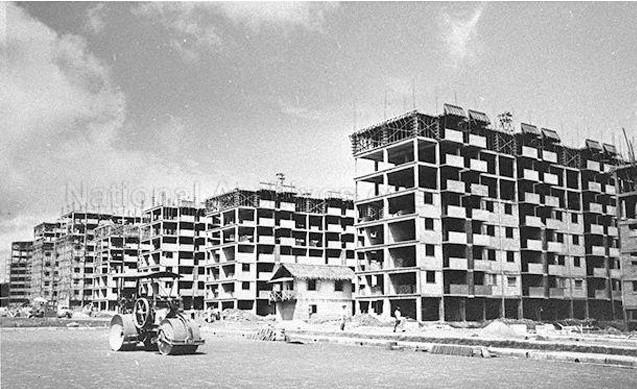
Figure1:QueenstownHDB.
Allrightsreserved.NationalLibraryBoardSingapore,2007.
Morethanjustahousingestate,Queenstownrepresentsacarefullyplannedcommunity, reflectingthegovernment’sambitioussocialengineeringprojecttocreateacohesive, modernSingapore.However,asSingaporecontinuestoevolve,Queenstownfaces increasingpressureforredevelopment,raisingcriticalquestionsabouttheconservation ofitsmodernistheritage. Theestate’searlysuccessservedasamodelforsubsequent HDBtowns,shapingtheurbanlandscapeofSingaporefordecadestocome.The modernistarchitecturalstyleadoptedinQueenstownreflectedtheforward-looking aspirationsofthenewlyindependentnation,prioritizingfunctionality,efficiency,and affordability.Queenstown’searlyHDBflatsarecharacterizedbyadistinctmodernist aesthetic,reflectingthedesignprinciplesoftheera.Thebuildingstypicallyfeatureclean lines,rectangularshapes,andunadornedfacades,emphasizingfunctionalityover ornamentation.TheuseofexposedconcretewasahallmarkofearlyHDBdesign, reflectingapragmaticapproachtoconstructionandadeparturefromthemoreornate
stylesofthecolonialera.Manyblocksareelevatedonpilotis(columns),creatingopen spacesatgroundlevelforcommunityactivitiesandallowingforbetterventilation.The modernistarchitectureofQueenstownsymbolizedSingapore’saspirationsforprogress andmodernity,reflectingtheforward-lookingspiritofthenewlyindependentnation.
“Forthequalityofamodernlivingenvironmentthearchitectureandlandscapingofthe everydayisfarmoreimportantthanthepresenceofarchitecturalicons.Andifthegoal ofmodernismistocreateabetterfutureforall,Singaporetrulyhasmuchtooffer…”
-Hubert-JanHenket,FounderandHonoraryPresidentofDOCOMOMOInternational
4.2.2 POLICY IMPLICATIONS AND CHALLENGES IN CONSERVING
QUEENSTOWN HDB ESTATE:
TheconservationofQueenstownHDBEstatepresentsacomplexsetofpolicychallenges thatreflectbroaderissuesandtensionbetweenurbanheritageconservation,andpublic housingrenewalinSingapore. Thesechallengesariseduetheintersectionofvarious policydomains,includingurbanplanning,housing,heritageconservation,andeconomic development.AsoneoftheearliestpublichousingestatesdevelopedbytheHousing andDevelopmentBoard(HDB),Queenstownholdsarchitectural,historical,andsocial significance.But,itsconservationiscaughtinacomplexnetworkofintersectingpolicies relatedtourbandevelopment,landeconomics,andhousingprovision.Akeypolicy challengebetweenconservationgoalsandpublichousingisrenewalstrategies, particularlytheSelectiveEnblocRedevelopmentScheme(SERS).TheSelectiveEnbloc RedevelopmentScheme(SERS)andotherpublichousingrenewalprogramsconflicts withtheconservationeffortsinQueenstownestates.Whilethisprogramhasbeen successfulinrejuvenatingmanyestates,ithasalsoledtothelossofmanyearlyHDB blocks.AsChua(2017)notes,theemphasisonprovidingmodernamenitiesandlarger
flatscanovershadowthehistoricalandsocialvalueofolderestates.Theyalsorelocates residentstonewersites,sometimesveryfarfromtheiroriginalneighbourhoods, disruptingtheirowncommunityties.InQueenstownevensomeresidentspetitioned againstrelocationduetotheirdissatisfactionintheirreplacedsites.Thisincidents revealsthesocialcostofredevelopmentpoliciesandreflectsabroaderpolicymodelin whichfunctionalandeconomicobjectivesoftentakeoutweighoverthehistorical continuity.InthecontextofQueenstown,conservationeffortshaveoccasionallybeenat oddswithurbanplanningandland-usepriorities.Thegovernment’semphasison constanturbanrenewalandmaximizinglandusevaluehasledtothedemolitionof manyolderbuildings,includingthoseinQueenstown.TheLandAcquisitionAct,which allowsthegovernmenttoacquirelandforpublicpurposes,hasbeenapowerfultool forurbanredevelopmentbutcanposeathreattoheritageconservation.Singapore’ s focusonoptimizinglandvalueoftenprioritizeseconomicdevelopmentoverheritage conservation.Theabsenceofformalconservationstatusformanypost-independence modernisthousingblocksfurthercomplicatestheissue,assuchbuildingsfalloutside theestablishedframeworksusedbyagenciesliketheUrbanRedevelopmentAuthority (URA)todesignateandprotectheritagesites.Alsoconservationpoliciesarenotalways integratedintobroaderframeworksofsustainabilityandliveability.Inrapidly urbanisingcontextslikeSingapore,conservationisoftenexpectedtojustifyitselfin economicterms,throughtourismpotential,adaptivereuse,orwithhigh-density redevelopment.Asaresult,estateslikeQueenstownfaceapolicylandscapewherethe valueofmodernistpublichousingisinsufficientlyrecognised,especiallywhen comparedtocolonialorhigh-styleheritagetypologies.Conservationeffortsmustalign withbroadersustainabilityobjectives,ensuringthatconservedstructurescontributeto liveableandresilienturbanenvironments.
Thisdesignalsoofferedimprovedconvenience,aseachapartmentwaslocatedcloseto elevators,reducingwalkingdistancesforthestayingresidents Thepointblockswere constructedonelevatedground,offeringpanoramicviewsofdowntownSingapore.This featurenotonlyaddedaestheticvaluebutalsofosteredasenseofplaceamong residents.KarenLum(interviewed)along-timeresident,recalledenjoying unobstructedviewsofNationalDayfireworksfromherapartment.Thesuccessofthis pilotprojectatMeiLingStreetledtothereplicationofpointblocksacrossSingapore, embeddingthemasakeytypologyinHDB’shistory.
4.3.2 POLICY IMPLICATIONS AND CHALLENGES IN CONSERVING MEI LING STREET POINT BLOCKS:
TheMeiLingStreetPointBlocksaresignificantnotjustfortheirarchitecturalmeritbut alsofortheirsocio-culturalvalue.ConservingthissitewithinSingapore’surbanrenewal frameworkpresentsseveralchallengesthatreflectbroaderissuesinurbanheritage conservation.BalancingDevelopmentwithConservationisoneofthemostdifficult challengesinheritageconservationofeverydaymoderniststructureMeiLingStreet PointBlocks.Singapore’srapidurbanizationoftenprioritizeslandoptimizationover heritageconservation.WhiletheUrbanRedevelopmentAuthority(URA)has establishedconservationguidelines,thesearefrequentlyoverriddenbyeconomic needs.UnofficialheritagesiteslikeMeiLingStreetPointBlocksfacepotential redevelopmentunderschemesliketheSelectiveEnBlocRedevelopmentScheme (SERS).AlsolackofLegalProtectionplaysaimportantroleinconservationchallenges. Unlikenationalmonumentsorofficialconservationareas,buildingslikeMeiLingStreet PointBlockslacklegalprotection.Thepointblocksareover50yearsoldandrequires significantmaintenance.Whilesomeresidentsvalueheritageconservation,many
othersmayprioritizemodernamenitiesandhighercompensationpackagesoffered underredevelopmentschemes.ThisleavesMeiLingstreetpointblocksvulnerableto demolitionorunsympatheticalterations.
Inconclusion,HDBflatsaremorethanfunctionaldwellings;theyareintegralto understandingSingapore’sarchitecturalheritageandsocialevolution.Their conservationisnotjustaboutconservingbuildingsorstructuresbutaboutsafeguarding thenarrativestheyembodylikenarrativesofprogress. Recognizingthesignificanceof everydaymodernismchallengestraditionalnotionsofheritagethatprioritizegrandeur overordinariness,urgingustoappreciatetheprofoundimpactofseeminglymundane spacesonourcollectiveidentity.
4.4 COMPARITIVE CASE STUDIES IN SINGAPORE’S PUBLIC HOUSING
CONSERVATION:
Singapore Improvement Trust architects and managers took inspiration from public housinginBritishnewtownslikeStevenage,HarlowandCrawley.Theseinfluenceswere appliedtotheestate’sflatsandshophouses,creatingablendofimportedandlocalstyles. The style refused the elaborate, decorative construction and focused on simple expressionsofclearlinesandplanes.SITflatsaretypicallylocatedintheCentralRegion of Singapore and their construction was closely linked to Singapore’s rapid urban development during its colonial and early post-independence years. These flats were used in the resettlement of crowded tenements in the city centre to make way for the primelandtobedevelopedintheCentralBusinessDistrict.Asthegrowingcitycentre’s grabforspacegraduallyradiatedoutwardstofringeareasbeyondtheCentralArea,the fate of SIT flats built in these planning zones, regardless of their age or locations, was typicallythatofdemolition.
4.4.1 TIONG BAHRU ESTATE (Pre-War SIT Flats):
These flats are constructed in the 1930’s by the Singapore Improvement Trust (SIT), TiongBahruisSingapore’sfirstpublichousingestate.ItsArtDecoarchitecture,curved balconies,andcommunalcourtyardsreflectearly20th-centuryurbandesign.In2003,the Urban Redevelopment Authority (URA) granted conservation status to 20 pre-war blocks, restricting structural alterations while allowing interior modernization within theseflats. Thisapproachbalancedheritageconservationwiththeapproachofadaptive reuse,transformingtheestateintoaculturalhubwithcafes,galleries,andheritagetrails. These pre-war SIT flats had and have varied different challenges due to economic pressurelikeraisingpropertyvalueduetogentrification,displacinglongtermresidents. Also, policy limitation like any other everyday modernist building unlike national monumentsorcolonialbuildings,SITflatslackedstatutoryprotectionuntilcommunity stimulate URA intervention. The Urban Redevelopment Authority (URA) held a public consultationandexhibitionofsitesproposedforconservation.TiongBahruwasnotpart of this exhibition, but was later included after a public show of support for the estate.
Public support during URA’s 2002 consultation highlighted the role of grassroots movementsinshapingconservationagendasandguidelines.
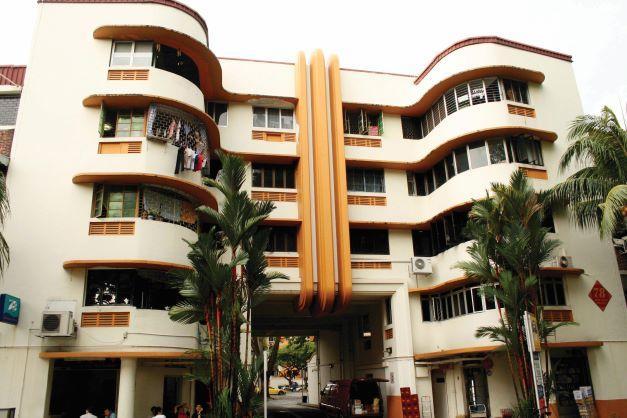
AllRightsReserved.NationalLibraryBoardSingapore
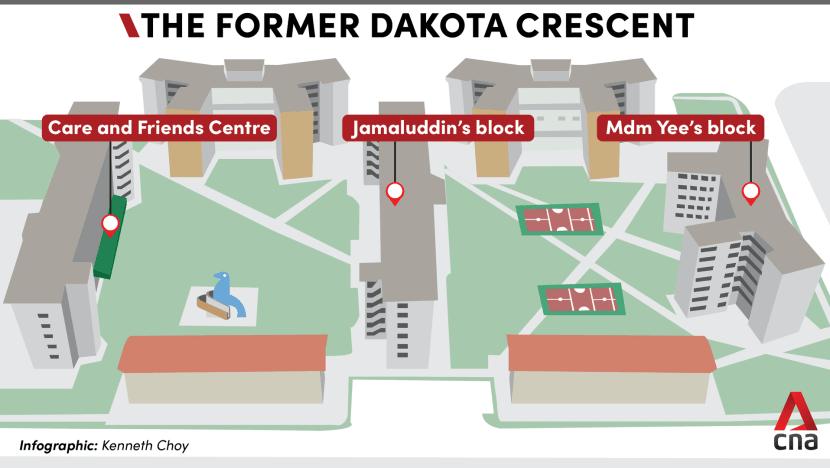
Figure6:TheformerDakotaCrescent. AllRightsReserved.CNA.
4.4.3 REDHILL CLOSE (SIT Estate):
Builtin1955,RedhillClose’s21blocksfacedSERSin2011.SimilartoDakotaCrescent, itsresidentsmainlymanyelderlywereaskedtorelocate,raisingconcernsabouteroding and vanishing social networks. Many of its residents had been residing there since its completionin1958,withmostofthembeingretireesintheir60sorolder,andabouttwo thirds of the households had one or more elderly members. In July of 2014 the HDB announcedthattheestatewasslatedandmarkedforredevelopment.UnlikeTiongBahru, Redhill Close lacked unique architectural features deemed worthy of conservation, reflectingURA’sprioritizationof“distinctive”heritage.
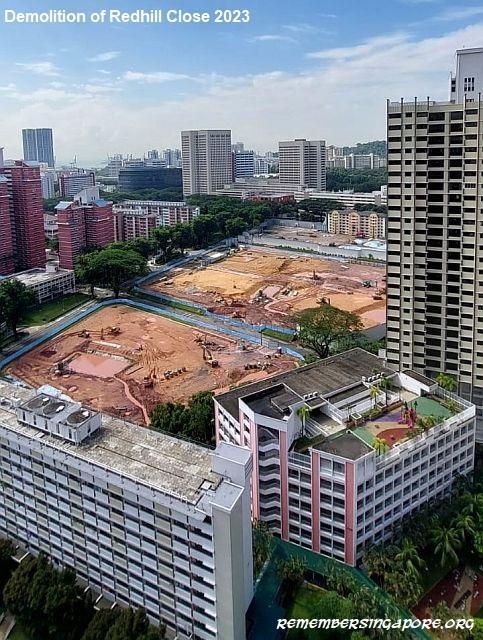
Figure7:DemolitionofRedhillClose.
4.4.3.1 COMPARITIVE POLICY IMPLICATIONS:
CASE STUDY
CONSERVATION
APPROACH
KEY CHALLENGES
TiongBahru Adaptivereusewith commercialintegration Gentrificationand displacement
DakotaCrescent DemolitionunderSERS Lackoflegalprotection andcommunityloss
RedhillClose Redevelopmentprioritized overconservation Socialequityandaging demographics
Table2:ComparingTiongBahru,DakotaCrescent,andRedhillCloseonapproachand keychallenges.
4.5.2 ADAPTIVE REUSE AND COMMUNITY ENGAGEMENT:
URA’s conservation guidelines encourage adaptive reuse but focus on pre-war architecture. For modernist buildings like Mei Ling Street Point Blocks, adaptive reuse strategiesareunderdeveloped.Andalsolackofspecificationsforretrofittingreinforced concretestructurescommoninmodernistarchitecture.SERSprioritizesredevelopment overcommunityconservation,displacinglong-termresidentswithoutformalobjection procedures. Community engagement frameworks should be formalized within conservation policies to ensure residents’ voices are heard during redevelopment decisions. The absence of mandatory Heritage Impact Assessments (HIAs) in SERS projectsexposesnon-selectedsiteslikeMeiLingStreetPointBlockstodemolition.
POLICY DOCUMENT
OBJECTIVES
URAConservationGuidelines Promoteadaptivereusewhileconserving architecturalintegrity.
SERS
HIAFramework
Maximizelanduseefficiencythrough redevelopmentschemes.
Assessimpactsonheritagesitesduring developmentprojects.
Table 3: Policy Document Objectives Table (Comparing URA conservation guidelines, SERS,HIAframeworkbasedontheirobjectives
Everydaymodernismisundervaluedinexistingpoliciesduetonarrowheritagevaluation criteria focused on age and architectural distinctiveness. Adaptive reuse strategies are underdeveloped for post-war housing typologies, limiting their integration into urban renewal projects. Community engagement mechanisms are weak, with limited opportunities for residents to influence redevelopment decisions affecting their home
andlivelihood. Andalsothenonselectedsitesgothroughdemolitionunderschemeslike SERS, highlighting the need for expanded legal protections and the involvement of mandatoryHIA.
5. DISCUSSION
Thischapteraddressesthecoreresearchquestionsbyexaminingtheextenttowhich Singapore'scurrentconservationpoliciescatertotheuniquecharacteristicsandvalues ofpost-independenceeverydaymodernistarchitecture,howthesepoliciesbalance heritageconservationwithurbandevelopmentpressures,andhowSingapore's approachcomparestoothernationsfacingsimilarchallenges.
5.1 CONSERVATION POLICIES AND EVERYDAY MODERNIST ARCHITECTURE IN SINGAPORE:
Theconservationofpost-independenceeverydaymodernistarchitectureinSingapore presentsacomplexinterplayofhistoricalsignificance,socio-culturalvalue,economic realities,andpolicychallenges.Thisemphasishasresultedinarelativeneglectofpostindependenceeverydaymodernistarchitecture,leavingmanybuildingsvulnerableto demolitionorinsensitivealterations.Severalfactorscontributetothisimbalance. Firstly,thecriteriaforconservationoftenprioritizearchitecturalstylesandhistorical narrativesthatpredateSingapore'sindependence.Buildingsaretypicallyassessed basedontheiraestheticqualities,historicalassociations,andcontributiontotheurban landscape.Buteverydaymodernistbuildingsoftenfalloutsidetheseestablishedcriteria forconservation.Theseeverydaystructuresarefrequentlyconsideraslackingthevery historicalandarchitecturalsignificancewhichisrequiredforthisconservation. Secondly,publicperceptionandsocio-culturalvaluesplayacrucialroleinshaping
conservationpriorities.StructuresfromSingapore'scolonialperiodfrequentlyinspirea feelingofnostalgiaandconnectustothenation'spast.Incontrast,everydaymodernist buildingsareoftenviewedasoutdated,unattractive,orevenassociatedwithsocial issuessuchasaginginfrastructureandhigh-densityliving.Thisperceptionundermines publicsupportfortheirconservation,makingitdifficulttoadvicefortheirprotection. Thirdly,thelackofspecificguidelinesandincentivesforconservingpost-independence architecturefurthermakeworseoftheproblem.Despitethesechallenges,thereisa growingrecognitionoftheimportanceofconservingpost-independenceeveryday modernistarchitectureinSingapore.Asthesebuildingsageandfaceincreasingthreats fromredevelopment,theirculturalandhistoricalsignificancebecomesmore apparent.ThesestructuresembodytheeverydaylivesandexperiencesofSingaporeans duringatransformativeperiodinthenation'shistory.Conservingtheseeveryday structuresisessentialformaintainingasenseofcontinuitywiththepast,conserving socialmemory,andunderstandingSingapore'suniquearchitecturalheritage.In addition,conservingeverydaymodernistarchitecturecancontributetosustainable urbandevelopmentofSingaporebypromotingadaptivereuseandreducingthe environmentalimpactofdemolitionandnewconstruction.Toaddresstheseissuesin currentconservationpolicies,thecriteriaforconservationshouldbeexpandedand enlargedtoincludeaverybroaderrangeofarchitecturalstylesandhistorical narratives,recognizingtheculturalandsocialsignificanceofpost-independence everydaymodernistarchitecture.Thiscanbedonebydevelopingspecificguidelinesfor evaluatingthearchitecturalmeritandvarioushistoricalvaluesoftheseeveryday structures,consideringfactorssuchastheircontributiontotheurbanlandscape,their reflectionofsocialandculturalvalues,andtheirrepresentationofSingapore'spostindependencedevelopment.Alsoincreasingpublicunderstandingandappreciation,it
governmentoftensconsultswithstakeholdersforthedecisionmakingprocess,butthe finalsayordecisionisdonebythegovernment,whichmayprioritizeeconomic considerationsoverconservationneedsandconcerns.Toimproveabalancebetween conservationandurbandevelopment,conservationshouldbeintegratedmorefullyinto theurbandevelopmentplanningprocess,andalsoensuringthatheritage considerationsaretakenintoaccountatallthestagesofurbandevelopment.This involvesconductionHIA(HeritageImpactAssessments)foralllargeandmajor developmentalprojects,consultingwiththeheritageexpertsandalsoincludingthe public,anddevelopingtheconservationalplanswhicharealignedwiththeurban developmentalgoals.Andthedecisionmakingprocessregardingconservationshould bemoretransparentandshouldbeallowedforgreaterpublicinputandscrutiny.Also theinnovativeapproachestoconservationshouldbeexplored,suchasadaptivereuse, whichcantransformolderbuildingsintonewuseswhilepreservingtheirhistoricaland architecturalsignificance.Adaptivereusecanprovideeconomicbenefits,enhancethe urbanlandscape,andpromotesustainabledevelopment.
5.3 COMPARISON WITH OTHER SIMILAR NATIONS:
Singapore'sapproachtoconservingpost-independencearchitecturecanbecompared tothatofothernationswithsimilararchitecturalheritageanddevelopmentpressures, suchasHongKong,SouthKorea,andJapan.Thesenationssharesahistoryofrapid economicgrowth,urbanization,andmostcommonlythesenationshaveadesireto modernizetheirbuiltenvironment.Theyalsofacesimilarchallengesinbalancing heritageconservationwithurbandevelopment.HongKong,likeSingapore,has experiencedrapideconomicgrowthandurbanization,leadingtointensepressureonits builtenvironment.HongKong'sconservationpolicieshavehistoricallyfocusedon
preservingcolonial-erabuildingsandtraditionalChinesestructures,withlessattention giventopost-wareverydaymodernistarchitectures.However,likeSingapore,inrecent years,therehasbeenagrowingrecognitionoftheimportanceofconservingmodernist buildings,particularlythoseassociatedwithHongKong'spost-warindustrialandsocial development. SouthKoreaalsofacessimilarchallengesinconservingitspost-war architecture.ManyeverydaymoderniststructuresofSouthKorea,whicharenowfacing increasingthreatsfromredevelopmentarebeingdemolishedoralteredbeyond recognition.ButSouthKoreahasexpandeditsheritagelistingtoincludemoreeveryday modernistbuildings,providingthemwithlegalprotection. Japan,withitsverylong historyofarchitecturalinnovationandculturalheritagethroughouttheyears,hasa moreestablishedframeworkforconservingitsmodernarchitecture.Thegovernment hasprovidingthemwithlegalprotectionandfinancialsupportforconservation.Butit isnotsameforeverydaymoderniststructures.So,manyeverydaymodernistbuildings inJapanarefacingthreatsfromredevelopment,particularlyinurbanareaswhereland isscarcesimilartoSingapore.
WhencomparingSingapore'sconservationapproachtotheseothernationsrevealsboth similaritiesanddifferences.LikeHongKongandSouthKorea,Singaporehashistorically prioritizedtheconservationofcolonial-erabuildingsandtraditionalstructures,with lessattentiongiventothepost-independencemodernistarchitecture.However,like Japan,Singaporehasbeguntorecognizeandseetheimportanceofconservingits everydaymodernheritage,andhasimplementedmeasurestoprotectsomeeveryday modernistbuildings.OneverybigkeydifferencebetweenSingaporeandtheseother nationsisthelevelofpublicparticipationinallstagesofconservationprocess.InJapan, thereisastrongtraditionofpublicinvolvementinheritageconservation,withlocal
communitiesplayinganactiveandbigroleinidentifyingandprotectingimportant buildingsandsites.InSingapore,publicparticipationinconservationismorelimited, withthegovernmentplayingamoredominantroleindecision-making.Anotherbig differenceistheextenttowhichconservationisintegratedintotheurbanplanning processbythegovernment.InJapan,conservationconsiderationsaremorefully integratedintourbanplanningprocess,withHIA(HeritageImpactAssessments) conductedforallmajordevelopmentprojects.Alsoimplementingasystemoftransfer ofdevelopmentrights,whichwillallowthedeveloperstotransferdevelopmentrights fromaprotectedsitetoanotherlocation.Thiscanhelptoconservetheeveryday moderniststructureswhilestillallowingforeconomicdevelopment.InSingapore, conservationisoftentreatedasaoneseparateissuefromurbanplanning,leadingto conflictsbetweenheritageconservationandurbandevelopmentgoals.Overall, Singapore'sapproachtoconservingpost-independencearchitectureisevolving,witha growingrecognitionoftheimportanceofpreservingitsmodernheritage.However,itis stillnotenoughandbyearningfromtheexperiencesofothernations,Singaporecan strengthenitsconservationpoliciesandensurethatitspost-independenceeveryday architectureisconservedforfuturegenerations.
6. RESULTS AND RECOMMENDATION
6.1
KEY FINDINGS OF THIS RESEARCH
TheevolutionofSingapore’smodernistarchitectureisrootedincolonial-era developmentplansbutgainedmomentumwiththecontributionsoflocalarchitects trainedoverseasduringthepost-independenceyears.Theintegrationofsocio-cultural influencesandstate-ledurbanplanningshapedthebuiltenvironment,resultinginboth iconiclandmarksandfunctionalpublichousingestateslikeDakotaCrescentandTiong
everydaymoderniststructuresliketothatusedforpre-warstructures,inorderto developthelevelofprotectionneeded.Thisgradingsystemshouldconsiderthe building'sintegrity,rarity,andcontributiontotheurbanlandscape.Alsodevelopingand establishingaverydetaileddesignguidelinesforthenewupcomingdevelopmentsinor thatofadjacenttotheconservationareaensuringthattheyrespectthestructurein theirscale,form,andmaterials.AndforSERSandEnBlocSales,developinga comprehensiverelocationstrategiesforresidentsaffectedbyredevelopment,ensuring thattheyareofferedsuitablehousingoptionsinareasthatmaintaintheirsocial networksandaccesstocommunityamenities.Allowingadditionalfloorareafor conservedmodernistbuildingstoreduceandoffsetrestorationcostswillenhancethe conservationofeverydaymodernistbuilding.
6.2.2 INTEGRATION OF TOOLS:
ConservationtoolslikeHeritageImpactAssessments(HIA)shouldplayacrucialrolein conservingeverydaymoderniststructuresinSingapore.HIAsprovideasystematic approachtoevaluatingthepotentialimpactsofproposedchangesonheritagesites, includingeverydaymodernistbuildings.ByimplementingHIAsasamandatorystepin thedevelopmentprocessforprojectsinvolvingeverydaymoderniststructures, Singaporecanensurethattheculturalandhistoricalsignificanceofthesebuildingsis thoroughlyconsideredbeforeanyalterationsordemolitionsoccurlater.HIAswould helptoidentifythekeyfeaturesandvaluesofeverydaymodernistbuildings,assessthe potentialimpactsofproposedchanges,andalsoitwillrecommendsomemitigation measurestoconservetheirintegrity.Thiswillhelpustounderstand,whichstructures ismoreimportanttoconserveandwhichisnot.Asconservationisaboutheritagein motion.InadditiontoHIAs,otherconservationtoolsshouldbeintegratedinto
planning.ComparativeanalysiswithothernationsrevealsthatSingaporecanlearn frominternationalbestpracticestostrengthenitsconservationpolicies.Byexpanding heritagelisting,developingincentiveprograms,promotingpublicawareness,and enhancingcommunityengagement,Singaporecanbetterconserveitspostindependencearchitecturalheritage.Thisrequiresashiftinmindset,recognizingthe intrinsicvalueofmodernistarchitectureasareflectionofSingapore'ssocio-economic transformationandthelivedexperiencesofitspeople.Themainsignificanceofthis researchistoenhancethenarrativesofthenation’shistoryandalsotocreateaimpact forthefutureprojects.Hence,thiswillallowustomakeinformeddecisionsaboutthe futureofurbandevelopmentinSingapore.Thisstudyprovidedservesasacrucial startingpointforidentifyingthegapsandopportunitiesinSingapore'sconservation policies,pavingthewayforamoreinclusiveandcomprehensiveapproachtoheritage conservation. Thedissertation'sfindingsonconservingSingapore'spost-independence everydaymodernistarchitecturehighlightcriticalareasforfutureresearchtoaddress gapsandexpandunderstanding.Futurestudiesshouldintegrateapproachesfrom architecture,urbanplanning,andsociologytoaddressthemultifacetedchallengesof conservingmodernistbuildings.Furtheranalysisofpolicygaps,suchasthelackoflegal protectionforeverydaymodernistbuildings,iscritical.Cost-benefitstudiescould explorefinancialincentives tomakeconservationeconomicallyviable.Researchinto theethicalimplicationsofdisplacingcommunitiesduringadaptivereuseprojectsis verymuchneeded.StudiescouldassesshowconservationalignswithSingapore’s nationalidentityandsocialequitygoals.Digitalarchivingtechniquescouldenhance accessibilityforresearchersandpolicymakers. Thedissertation"ConservingtheRecentPastofEverydayModernism:Challengesin ConservingPost-IndependenceArchitectureinSingapore"underscorestheurgentneed
tore-evaluateSingapore’sapproachtoarchitecturalheritage,particularlyits undervaluedmoderniststructuresfromthenation-buildingera.Byidentifyingkey challenges;thestudyhighlightstheprecariousstatusofthesebuildings,whichareoften dismissedasoutdatedorexpendable.Beyondpracticalsolutions,thefindingscallfora shiftinhowSingaporeperceivesitsarchitecturalidentity,urgingstakeholdersto recognizeeverydaymodernismasanintegralpartofthenation’scollectivememoryand builtenvironmentlegacy
8.1 Books & Journals
• Chang,Jiat-Hwee,andJustinZhuang. Everyday Modernism: Architecture and Society in Singapore.Singapore:NUSPress,2019.
• Chew,HuiMin."AdaptiveReuseofModernistArchitecture:Challengesand Possibilities." Journal of Urban Conservation 12,no.4(2021):98–110.
• Chua,BengHuat. Political Legitimacy and Housing: Stakeholding in Singapore London:Routledge,1997.
• Edwards,Bryan. Rough Guide to Sustainability.London:RIBAPublishing,2005.
• Frampton,Kenneth. Modern Architecture: A Critical History.London:Thamesand Hudson,1992.
• Glendinning,Miles. The Conservation Movement: A History of Architectural Preservation.London:Routledge,2013.
• Jameson,Fredric. Postmodernism, or, The Cultural Logic of Late Capitalism. Durham,NC:DukeUniversityPress,1991.
• Kim,Robert. Modern Korean Architecture.Seoul:HollymInternational,2004.
• Lefebvre,Henri. Critique of Everyday Life, Volume I: Introduction.Translatedby JohnMoore.London:Verso,1991.Originallypublishedin1947.
• Loh,KahSeng. Squatters into Citizens: The 1961 Bukit Ho Swee Fire and the Making of Modern Singapore.Singapore:NUSPress,2007.
• Low,SethaM.,andIrwinAltman.“PlaceAttachment.”In Place Attachment,edited byIrwinAltmanandSethaM.Low,1–12.Boston:Springer,1992.
• Lowenthal,David. The Past is a Foreign Country.Cambridge:Cambridge UniversityPress,1985.
• Risselada,Max. The Architecture of the Everyday.Rotterdam:NAiPublishers, 2005.
• Rodwell,David. Conservation and Sustainability in Historic Cities.Oxford: BlackwellPublishing,2007.
• Tan,KevinY.L. The Constitution of Singapore: A Contextual Analysis.Oxford:Hart Publishing,2015.
• Yeoh,BrendaS.A. Contesting Space: Power Relations and the Urban Built Environment in Colonial Singapore.Singapore:OxfordUniversityPress,1996.
8.2 Government Reports & Grey Literature
• CentreforLiveableCities. Conserving the Nation’s Built Heritage.UrbanSystems Studies.https://www.clc.gov.sg/docs/default-source/urban-systemsstudies/uss-conserving-the-nations-built-heritage.pdf
• Malone-LeeLaiChoo.“ConservationofSingapore’sRecentPast.”LeeKuanYew SchoolofPublicPolicy,NUS.https://lkyspp.nus.edu.sg/docs/defaultsource/ips/dr-malone-lee conservation-of-singapores-recent-past.pdf
